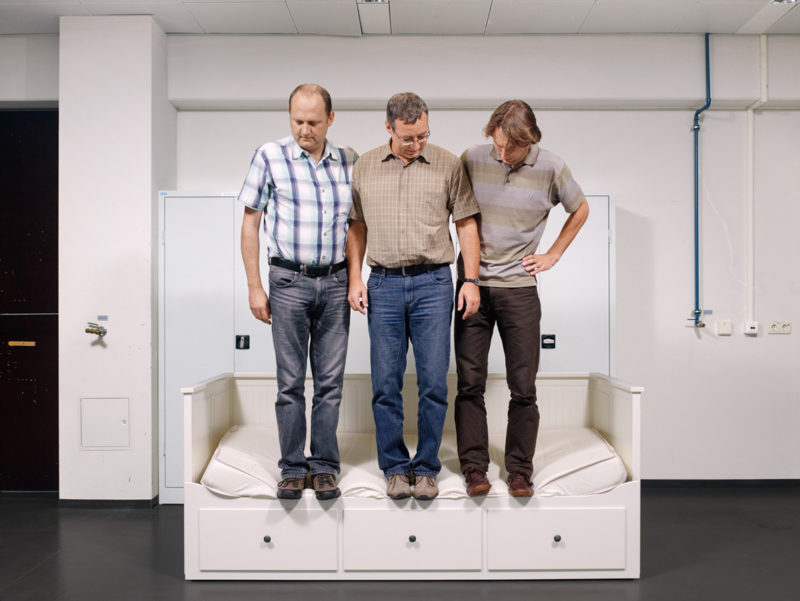Yesterday, I did a little online banking. The bank employs a series of security measures, one of which involves them showing me a badly drawn picture of a pizza, the so-called SiteKey (as we learned via Edward Snowdon, these essentially are all useless since the NSA hacks into everything anyway). “SiteKey lets you know you’re at a [add name of horrible bank here] site,” I’m being told, “and not a fraudulent one.” There might in fact be some rhyme and reason behind all of this. But if I step back just a little bit, I essentially have a serious business trying to instill trust in me through a badly drawn picture of a pizza.
Our contemporary life is filled with little infantilizing absurdities like the online-banking one. For the most part, we have decided to ignoring them, to accepting that this is indeed how we are supposed to live, because everything else would result in a Don Quixote style existence.
How do you go about photographing our often absurd contemporary existence? Andreas Meichsner had a simple idea: Go to a German testing lab that checks whether products follow German (or European) industrial norms, and take picture of people going about their work. As is almost always the case with photography (or elsewhere), the simplest solutions are the best (you just have to think of them). So there then is The Beauty of Serious Work, a book filled with visual gems.
I want to think of the women and men depicted in the book as standing in for all of us. In a very literal way, that’s their job: They are making sure that the norms designed to keep us safe are being followed. So they’re doing what we might be doing involuntarily or because we’re not paying attention or because we don’t know any better. And they might occasionally be doing what we really want to be doing. They are, in fact, very seriously acting out our innermost childishness, taking today’s infantilizing existence to its logical conclusion: If we’re being treated like children then we might as well act like children.
I wish they did these tests in public. It would be so enlightening. It would tell us so much about the times we live in. And it would be not just a very public display of safety tests, it would double as the most perfect performance art ever. I’ve always thought that most performance art is way too interested in making art, thus resulting in usually insufferable nonsense. If I take that thought further, I want to propose that real performance art can only exist outside of the context of the art world (this will not go over well with art critics). In other words, real performance art is involuntary. The art arises not from the intent or from the context, it arises from the spectacle.
Real performance art thus manifests itself on its own, their makers being quite unaware of it. It’s post-Duchamp: Something completely banal, taken out of some non-art context, becomes art not because someone says so (by signing it), but because someone doesn’t realize that art is being made.
Seen this way, Meichsner’s The Beauty of Serious Work is a deeply subversive book, a book that possibly only a German photographer could make. Where else, after all, are things being taken so seriously that if you make very deadpan photographs around very serious acts, done by very professional people, incredible art manifests itself spontaneously, as if out of thin air?
The Beauty of Serious Work; photographs by Andreas Meichsner; essay by Anke Strauß; 112 pages; Kehrer; 2013
Rating: Photography 4, Book Concept 3, Edit 3, Production 4.5 – Overall 3.7
Ratings explained here.
